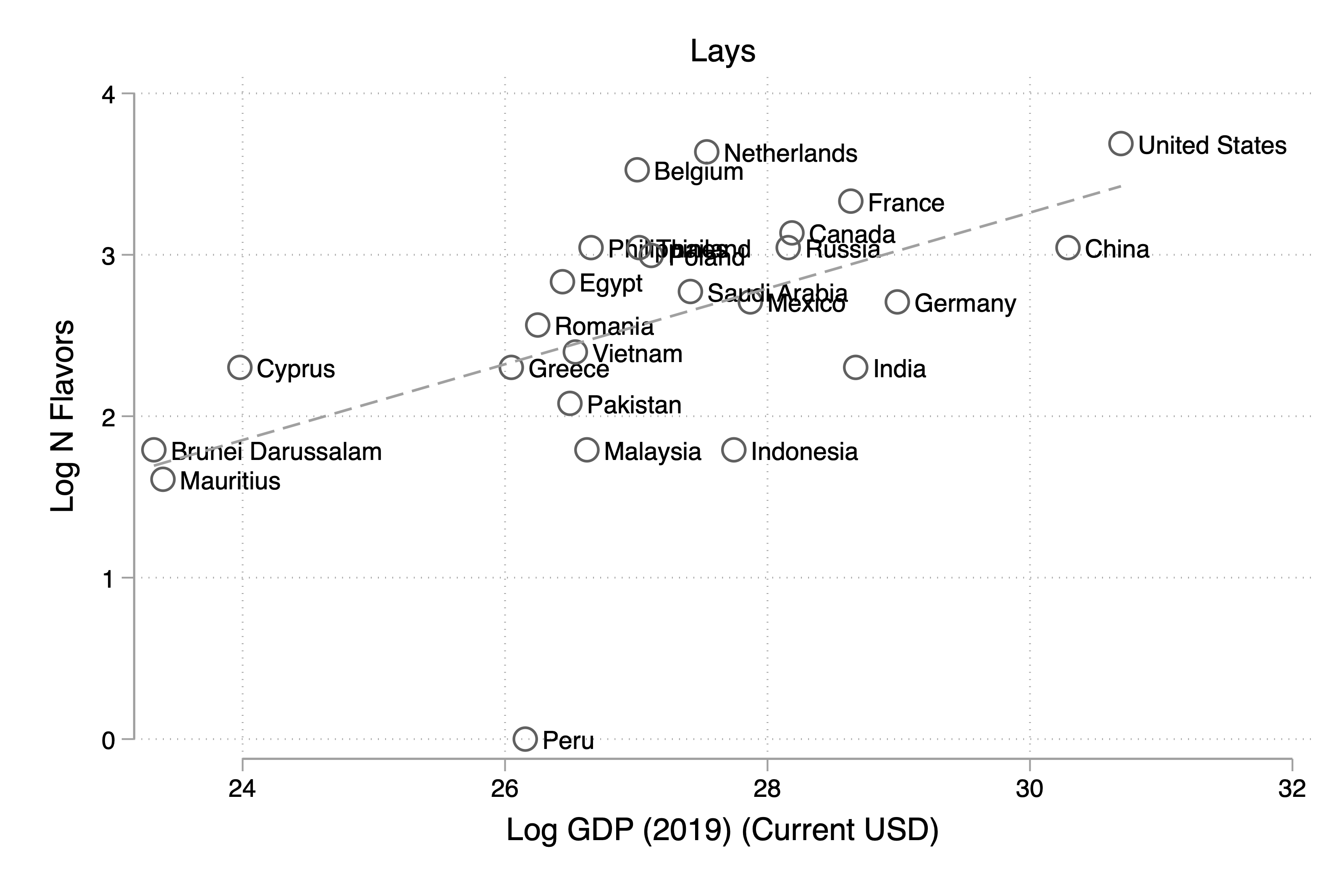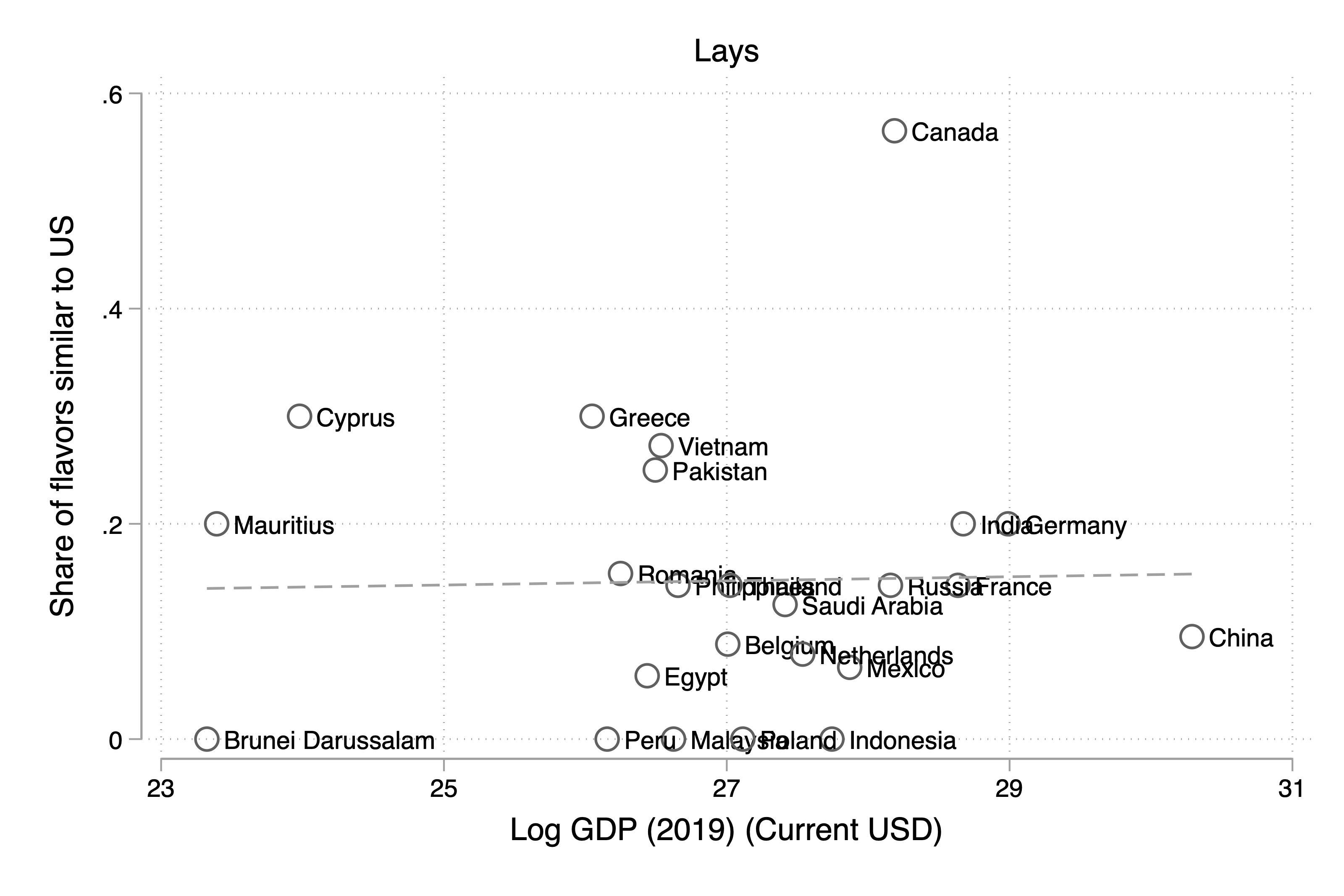Market size and chips (potato)
The United States is a mecca for choice when it comes to consumer goods. We are inundated by choice across varieties of soap, breakfast cereals, and so on. Standard models of product entry among monopolistically competitive differentiated goods predicts that the number of varities increases in market size; perhaps our overwhelming number of options is a reflection of our wealth. However, among one industry, I have always felt that the best varieties were available elsewhere – potato chips. Canada has ketchup and all dressed. Most of Eastern Europe has access to paprika. The UK has the lovely prawn cocktail. In China you can get spicy hot pot. The chip section at H-Mart offers many more and better flavors than the average Walmart. Is the United States a flavor outlier?
To answer this question, I grabbed the list of flavors around the world from Lay’s, a major chip manufacturer, from their wikpedia page. Chips have not only a flavor, but also a texture. Texture coding seemed incomplete on the wikipedia page, so I removed it from the analysis. Thus, I count wavy barbeque and double-crunch barbeque count as the same flavor. Finally, I did my best to flavor-code so that “American BBQ” and “Barbecue” count as the same flavor.
Merging on GDP from the World Bank, we get the following:

where the elasticity of number of flavors to GDP is measured at around 1/4.
The US does not appear to be an outlier – we do not have too few flavors relative to our market size. I then ask, is there a flavor hierarchy? Are poorer countries simply offered a subset of the US flavors? The answer is a clear no. I plot the share of flavors offered in a country that are also available in the US. There is no correlation with GDP!

Moreover, the base flavor similarity is around 1/6th, meaning that on average, only one in six flavors available in a foreign country is also in the US. Indeed, Lays flavors-to-market, offering unique varieties in each market. There must be a large fixed cost to serving a variety to a market, which prevents Lay’s from acting as the arbitrageur that ships me my cheese and onion and prawn cocktail flavors from the UK. Indeed I imagine the chip industry is one that prefers proximity in production over concentration.